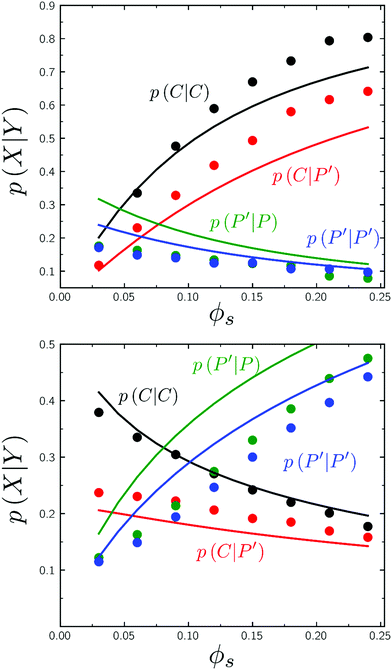 Open Access Article
Open Access ArticleCreative Commons Attribution 3.0 Unported Licence
Correction: Transfer matrix theory of polymer complex coacervation
Tyler K.
Lytle
a and
Charles E.
Sing
 *b
*b
aDepartment of Chemistry, University of Illinois at Urbana-Champaign, 505 S. Mathews, Urbana, IL 61801, USA. E-mail: cesing@illinois.edu
bDepartment of Chemical and Biomolecular Engineering, University of Illinois at Urbana-Champaign, 600 S. Mathews, Urbana, IL 61801, USA
First published on 1st November 2019
Abstract
Correction for ‘Transfer matrix theory of polymer complex coacervation’ by Tyler K. Lytle et al., Soft Matter, 2017, 13, 7001–7012.
The authors regret that there is an incorrect equation in ref. 1. Eqn (18) in the manuscript, and the subsequent example, are intended to compute the conditional probability p(si|si−1) of observing a state si at monomer i given a state si−1 at the previous monomer i − 1.1 The correct expression requires a similar calculation using the frequency n of the transitions from si−1 to si:
 | (1) |
In the original manuscript,1 the matrix elements M are taken to be the frequencies, but this is incorrect. Instead, these values of n require that a term be added to the calculation of the partition via a factor ζ added to the transfer matrix element of interest (i.e., M(si,si−1) → M(si,si−1) × ζ for si,si−1). The frequency can then be calculated via the expression:
 | (2) |
Acknowledgements
We acknowledge Jason J. Madinya for bringing this error to our attention.The Royal Society of Chemistry apologises for these errors and any consequent inconvenience to authors and readers.
References
- T. K. Lytle and C. E. Sing, Soft Matter, 2017, 13, 7001–7012 RSC.
| This journal is © The Royal Society of Chemistry 2019 |

